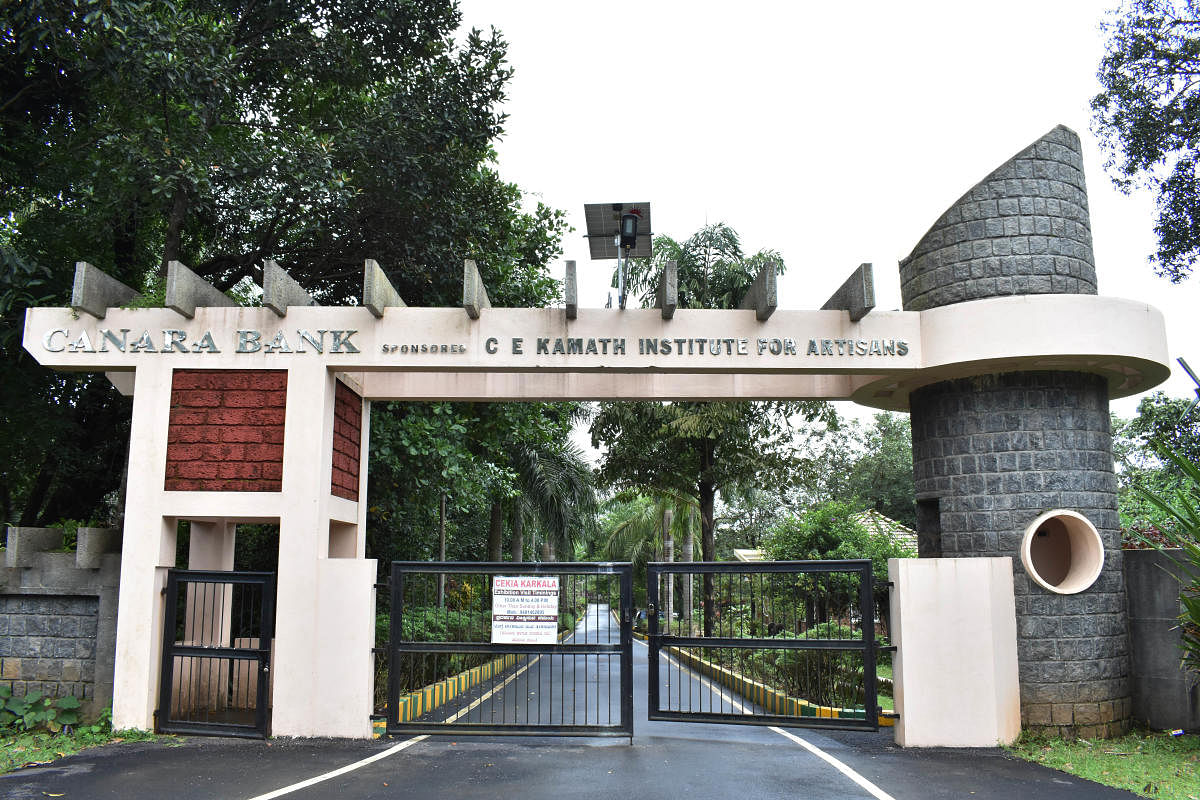
One might be inclined to assume that artisanship is an inherited quality alone. However, that is not the case, for, we’ve heard stories of how people with talent went on to do quality work through hard work and perseverance. It is a challenge indeed, to learn a skill from scratch and master it such that it leaves viewers in awe. But, here is one such institution that has been fostering one of the most intricate skills in students from rural backgrounds from the past 20 years.
The C E Kamath Institute for Artisans, located on the outskirts of Karkala, in Miyar, is a school like no other in the area. It is a part of the corporate social responsibility(CSR) activities of Canara Bank and has shaped the lives of nearly 700 students so far.
Making artists
The institute takes in students from rural and financially modest backgrounds. Here the students learn to create artefacts from wood, stone, clay and metal. It is a sculpture school where currently 77 youngsters are being trained to be ace sculptors by three faculties. Students from around Karnataka (and a few from other states as well) are admitted here and provided accommodation, food, uniforms and training free of cost for the span of 18 months.
The two courses offered here are wood and stone artisanship, and metal artisanship. The students, only male, admitted here must at least have a qualification of up to class VII, so that they are capable of basic measurements and taking notes.
The institute also provides free raw materials and tools for crafting alongside computer training and spoken English classes for these students. The facilities are not just limited to the span of the course; Canara Bank also funds start-ups and follows the students up to avail them a reasonable job in the same field once they finish their course. Almost all students who have trained themselves here during the past 20 years are now working in the field of fine arts.
In the beginning, sophisticated patterns are drawn and practised so that the students are able to wire themselves for higher levels of creativity and precision. The drawing phase lasts up to four months after which they are allowed direct access to sculpting under the guidance of skilled teachers. The best part is that they literally have to start from scratch with a design drawn from imagination and then carve out an image. The design can be anything, ranging from religious artefacts to western literary references, or even modern-day lifestyle representations.
They incorporate the design into the material with primitive tools and then the process is subjective, based on the type of material being used. Wood is apparently the easiest to work with, though it does take up to a month to finish one moderate sculpture. Stone is the most difficult as it takes more precision, strength and patience to carve out a sculpture. It takes months to prepare one and the time varies depending on the design.
Metal, however, is a different technique altogether as it does not involve direct sculpting of the structure. Two kinds of metal artefacts are produced by the students here — through casting and embossing. While casting produces idols and solid sculptures, embossing brings out three-dimensional impressions on metal boards. Both these processes involve making the sculpture in wax first. For casting idols, wax is used to mould a model which is covered with five layers of clay, and then left to dry. Later on, the wax is melted and removed, after which liquid metal is poured in its place. The end result is a metal sculpture. This process requires extraordinary skill as some idols are required to be made in one piece and a small mistake means a complete failure. These structures are exceptionally heavy, though small in size. Bronze is one of the prominent metal that is used here.
They’ve got a museum too
The biggest attraction of this institution is the massive collection that has been produced by the students for 20 years that is on display in the administrative block. “Most of the artefacts are preserved here are for reference, to be used by the students. However, we make sales over voluntary enquiries from the public,” says G P Prabhu, the director of the institution.
The youngsters who complete their courses here tend to be a part of the larger sculpting community. Shivaprasad, a businessman, currently deals in stone sculptures. He hailed from a modest background and found a direction through the courses taught in the institution.
Malik Nadaf, a student at the institution, is interested in sculpting Hindu idols. He says, ‘‘Art doesn’t restrict me from drawing ideas from drawing ideas from an ideology I don’t follow. This freedom is the best part of learning here.
The CE Kamath Institute for Artisans is a simple place where youngsters from modest backgrounds work wonders in a discipline. And, they go on to do really well for themselves.